Kitchen Science: Bubble Tea
Sip on the sweet science of bubble tea by learning how to make your very own chewy pearls!
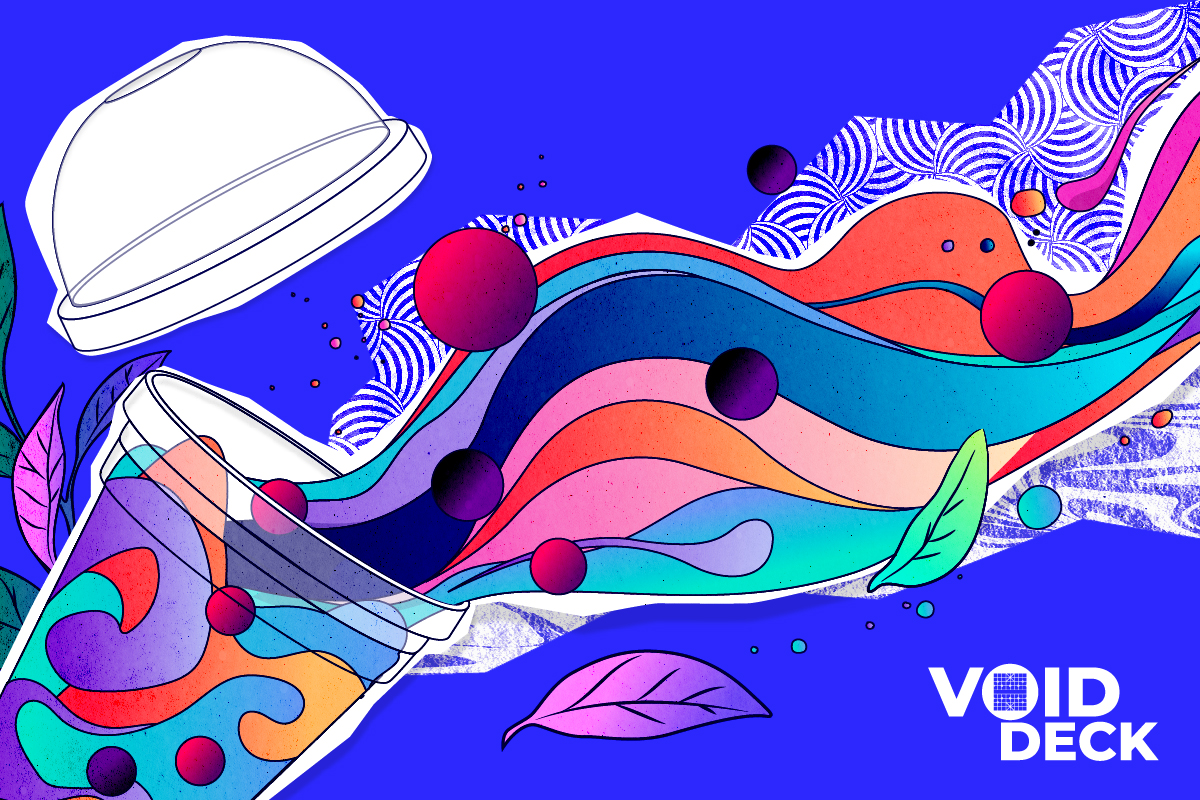
Someone once asked me, "Why bubble tea? What’s so great about it?" Are you kidding me? I can’t say the same for everyone, but at least for me, bubble tea solves everything (not literally everything, but you get me). It’s both a drink and a snack at the same time, which means if you’re hungry and thirsty, bubble tea will solve the problem.
If you’re happy, bubble tea is there to celebrate the joy with you. If you’re sad, bubble tea will wash those tears away. If you’re stressed, bubble tea will help ease the pain. I’m sure you get the gist of it all by now – bubble tea is life!
But how is this marvellous drink made? I am going to share with you some tips and tricks that I have picked up along the way for making your very own chewy pearls!
All you need is just three basic ingredients: brown sugar, water and most importantly tapioca starch, in an estimated ratio of 1:2:4. Not to mention having lots of time and patience – it is tedious work for the love of pearls.
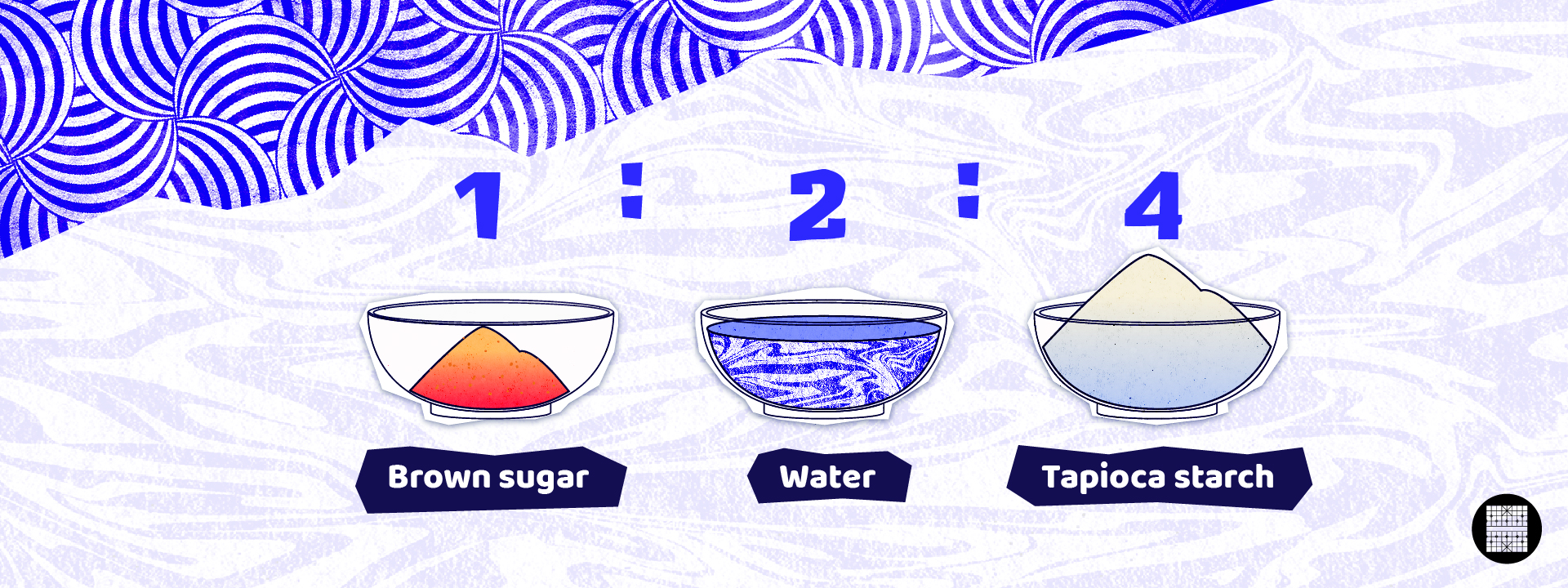
First, dissolve the brown sugar in boiling water before adding half of the tapioca starch to thicken the mixture. Once it thickens, remove it from the heat. Add and mix in the remaining tapioca starch until it starts to come together to form a dough. The trick here is to ensure that the water is boiling before adding in the tapioca starch so that starch gelatinisation can occur to form a dough. Otherwise, it turns into a non-Newtonian fluid, which will then melt into a sad blob when you try to shape your pearls.
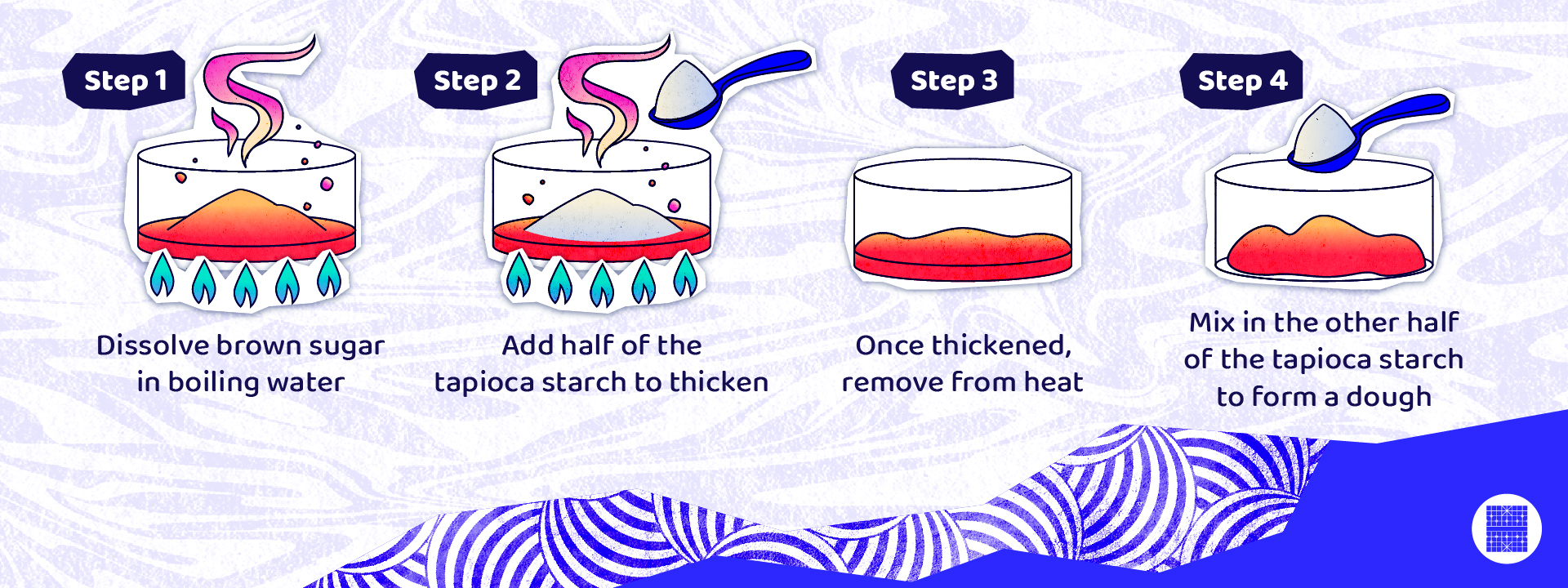
Once your dough is formed (and still warm), sprinkle some tapioca starch on a clean flat surface. This is where you will knead it till the texture resembles play-doh. If it is too sticky, add more tapioca starch into the dough. It will never become dry as you continue to knead the dough.
Next comes the arduous journey of rolling each individual pearl with love and patience. If you want those pearls, you’ve got to work for them, right?
Divide the dough into 4 equal parts. Roll them out into long and thin cylinders about 1cm in diameter (depends on how big or small you like your pearls), and cut them into small blocks to roll them into spheres. The untouched dough can dry up over time; you may want to wrap the remaining dough with cling wrap to keep it moist.
When you are done painstakingly rolling each pearl, shower them with some tapioca starch (and love) to prevent them from sticking together. Pro-tip: kids who are bored at home could be of great help!
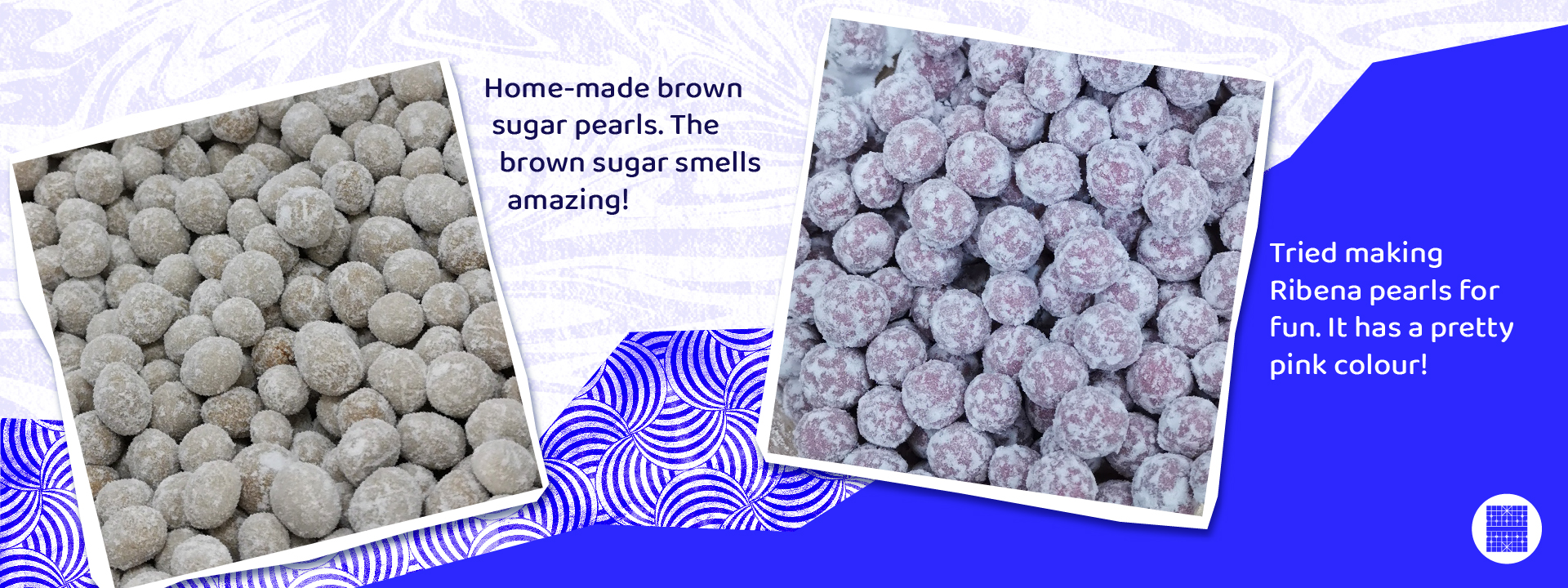
Now you’re ready to cook those pearls! But wait, if you wish to save some for the future, you may keep them in the freezer for up to 6 months. When you have decided how much of your stash to ration out, pour the pearls into a pot of furiously boiling water, stirring as you do so to prevent them from sticking to each other. Once they start to float in the water, you can lower the heat and stir occasionally.
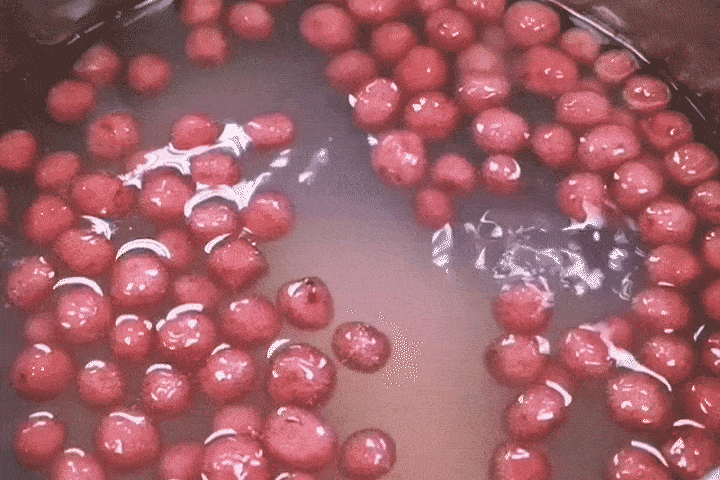
There are a few variations for cooking the pearls. You may choose to boil your pearls for about 15 to 20 minutes (depending on their size), after which you will transfer them into ice water. You may also choose to simmer the pearls for another 30 mins at low heat with the lid on before transferring them into ice water. Placing the pearls in ice water after cooking makes them bouncier and chewier!
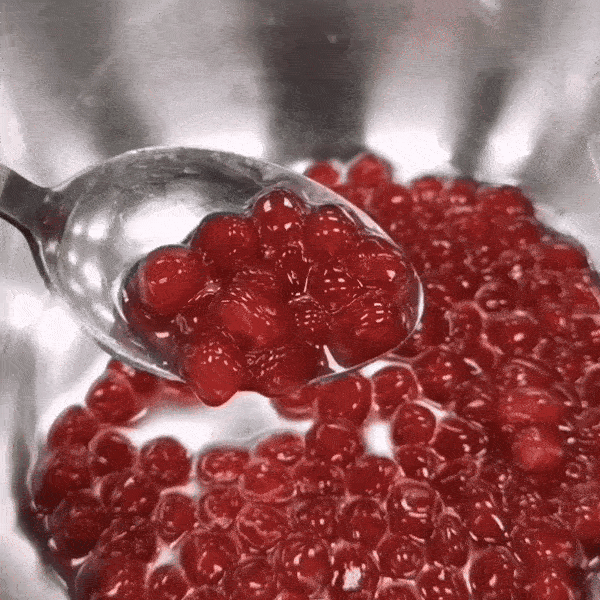
Once the pearls have cooled, drain off the excess water. You may choose to drizzle honey over your pearls or sprinkle sugar on your pearls to give them a little more sweetness and flavour. Let it soak for a while, et voilà your pearls are ready to be served with your favourite milk tea.
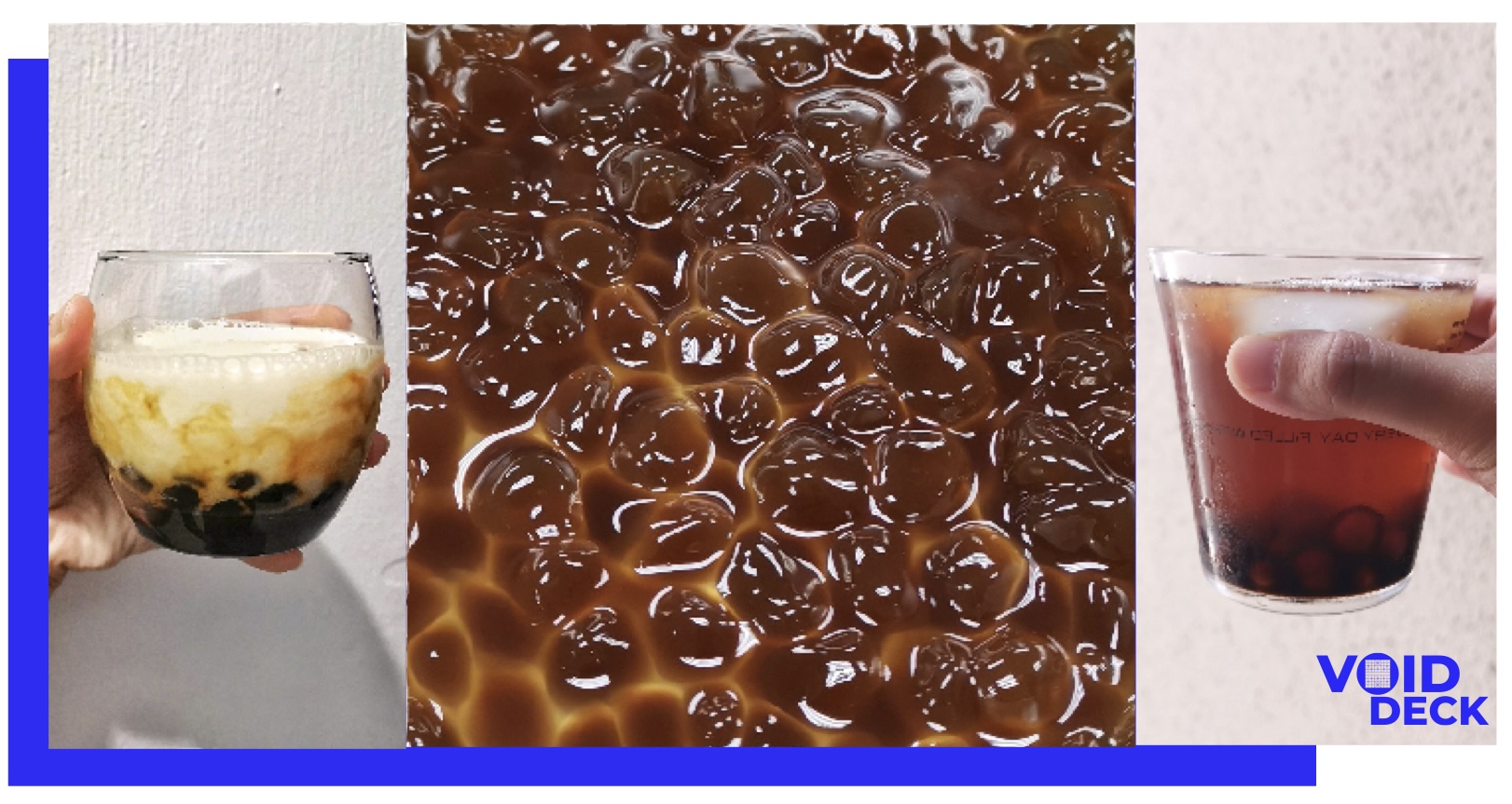
As you enjoy your cup of bubble tea, you may wonder how this cup of happiness came about.
Bubble tea, also known as boba tea, or 珍珠奶茶 zhēn zhū nǎi chá (pearl milk tea) all refer to the same thing – our favourite pastime drink – tea-based drink mixed with milk or flavoured syrups with tapioca pearl topping. However, the original bubble milk tea doesn’t contain pearls; the term ‘bubble’ in bubble tea actually refers to the froth you get after shaking the drink!
There are some speculations about the origins of bubble tea, but one seems to stand out: bubble tea originates from the city of Taichung, Taiwan in the 1980s, from the Chen Shui Tang tea shop where the owner Liu Han-chien sold his high mountain oolong tea.
As Taiwanese tea stands became increasingly popular and competitive, Liu wanted to set himself apart. Inspired by iced Japanese coffee, he wanted to change the way people drank tea, so he experimented by putting traditional milk tea in a cocktail shaker with ice and served tea cold. People thought that he was crazy as no one served chilled tea at that time.
However, it was very well-received by the youths and was almost revolutionary. This chilled tea turned out to be so popular, it became known as “bubble tea” due to the thick layer of foam that forms at the top of the drink after it is shaken.
The addition of tapioca pearls happened when a competition was held among staff to create an innovative drink. The store manager, Lin Hsiu-hui, enjoyed eating a Taiwanese dessert called tapioca balls, or 粉圆 fěn yuán and decided to add them to her iced Assam milk tea during a staff meeting.
And bam! Just like that, the bubble tea that we now know was born! It was so well-liked that other teahouses in Taiwan started following the trend, and it continued to spread from there, bringing joy to all over the world!
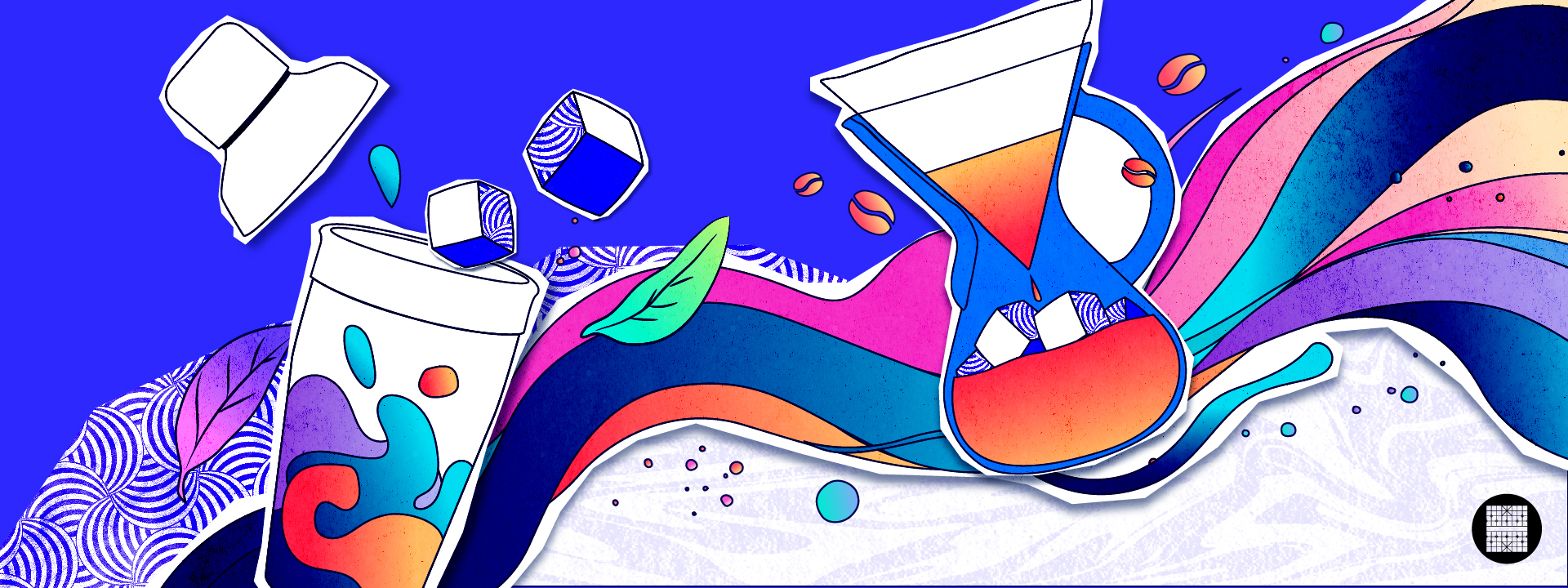
The addition of tapioca pearls happened when a competition was held among staff to create an innovative drink. The store manager, Ms Lin Hsiu-hui, enjoyed eating a Taiwanese dessert called tapioca balls, or 粉圆 fěn yuán and decided to add them to her iced Assam milk tea during a staff meeting. And bam! Just like that, the bubble tea that we now know was born! It was so well-liked that other teahouses in Taiwan started following the trend, and it continued to spread from there, bringing joy to all over the world!
Daily dose of joy sounds like a dream, doesn’t it? A cup a day keeps those worries away. I’d hate to burst your bubble, but did you know: other than joy, too much bubble tea could also lead to diabetes? A classic 500ml bubble milk tea has about 102.5g of sugar (excluding the sugar present in the bubbles), which is about 2.3 times more sugar than in 500ml of coke.
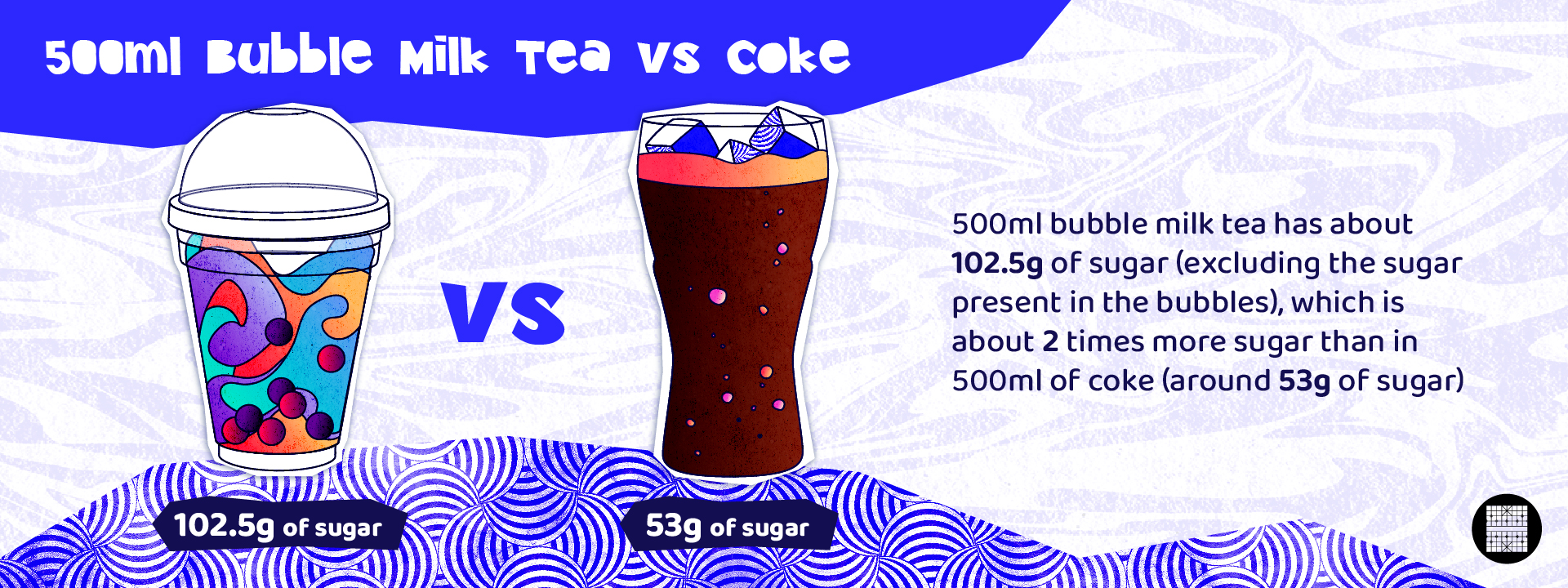
But not to worry, you can still enjoy your weekly dose of bubble tea with some minor adjustments:
-
Request for less sugar (30% or lower)
-
Opt for plain tea without milk (or fresh, low-fat or skimmed milk instead of non-dairy creamer)
-
Substitute tapioca pearls for white pearls instead
Remember, the key is moderation. Keep calm and boba on (in moderation)!
Original text and photography by Lim Huan
Edited for republication by Jamie Uy
Illustrations by Chua Jia Qi
This article was originally published as "Bubble Tea: The Drink that Makes our Heart Go Boba-boba" on Science Centre Singapore's blog, I Saw the Science, on 12 May 2020. The article has been edited and republished with new graphics for Void Deck.
Last updated: 1 November 2024

